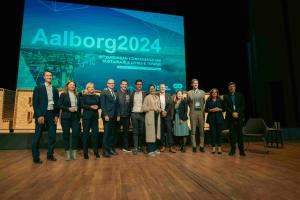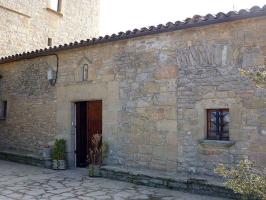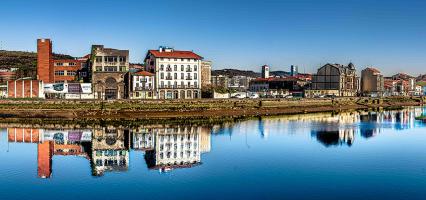Thessaloniki gets ready for its metro launch in November
The underground rapid transit lines have been under construction for almost two decades due to various project delays
 TheMayor.EU logo
TheMayor.EU logo It will soon be shipped to the Netherlands and put into operation
Earlier this week, Juan Espadas, the mayor of Seville, paid a visit to the Free Zone of the Port of Seville, to get acquainted with a pilot plant for the production of electricity using waste hydrogen. The plant, which was developed in the framework of the European Grasshoper project is a product of the local Abengoa company.
Its main advantage is that it is the first on the market capable of operating in a dynamic, flexible, and versatile ways and with a significant cost reduction. In essence, the plant is small enough that it can be transported, easily assembled and dis-assembled thanks to its modular nature. Once its commissioning phase has ended it will depart for the Netherlands where it will be put to use at a chemical park, which produces hydrogen as a by-product of its operations.
In the opinion of the mayor, the Abengoa plant highlights Seville as a benchmark for the European Green Pact in terms of several of its central axes: the change of the energy model, the commitment to renewable energies and economic growth of the industry. Juan Espadas recalled that this entire line of work for the diversification and sustainability of our economy and the required public-private collaboration is part of the Seville 2030 Strategic Plan.
He added: “We are facing a powerful work of research and technological innovation that reveals in all its dimensions the talent that exists in Abengoa company, which is a source of pride for Seville and Andalusia. In fact, this project, as back in its day were the innovative solar and thermosolar initiatives, once again places Seville as the protagonist of engineering applied to renewable energies.”
With the Grasshopper project (GRid ASsiSnting modular HydrOgen Pem PowER plant, or, in other words, PEM-type hydrogen cell power plant for grid balance assistance), a new generation of power plants is created, capable of operating dynamically, and able to adapt to the needs of the demand of the electricity grid.
This added value allows it to position itself in a very competitive position in the electricity reserve markets, once the pilot plant reaches a commercial operation level. The developers are already working on a larger-scale solution, which will allow its incorporation into the market almost immediately.
Another great benefit of the Abengoa plant is its modular nature, which makes it relatively easy to transport and connect it quickly, which is known as plug and play. Thus, Grasshopper presents the solution for the energy demand of remote places, which are not connected to the grid, such as camps or islands, or as an emergency generator for buildings, such as hospitals. Also, as a by-product, the plant generates heat, which can be used in industrial processes that require low temperatures, or for the supply of heating in residential areas.

The underground rapid transit lines have been under construction for almost two decades due to various project delays

Now you can get your wine in Talence by paying directly in Bitcoin

That’s because the state has to spend money on updating the railway infrastructure rather than subsidizing the cost of the popular pass

Rethinking renewable energy sources for the urban landscape

The examples, compiled by Beyond Fossil Fuels, can inform and inspire communities and entrepreneurs that still feel trepidation at the prospect of energy transition

Now you can get your wine in Talence by paying directly in Bitcoin

The 10th European Conference on Sustainable Cities and Towns (ESCT) sets the stage for stronger cooperation between the EU, national and local level to fast track Europe's transition to climate neutrality.

At least, that’s the promise made by the mayor of Paris, Anne Hidalgo

The underground rapid transit lines have been under construction for almost two decades due to various project delays

At least, that’s the promise made by the mayor of Paris, Anne Hidalgo

Hostal de Pinós is located in the geographical centre of the autonomous region

Despite its church-y name, the district has long been known as the hangout spot for the artsy crowds

Urban dwellers across the EU are having a say in making their surroundings friendlier to people and the environment.

Forests in the EU can help green the European construction industry and bolster a continent-wide push for architectural improvements.

Apply by 10 November and do your part for the transformation of European public spaces

An interview with the Mayor of a Polish city that seeks to reinvent itself

An interview with the newly elected ICLEI President and Mayor of Malmö

A conversation with the Mayor of Lisbon about the spirit and dimensions of innovation present in the Portuguese capital














